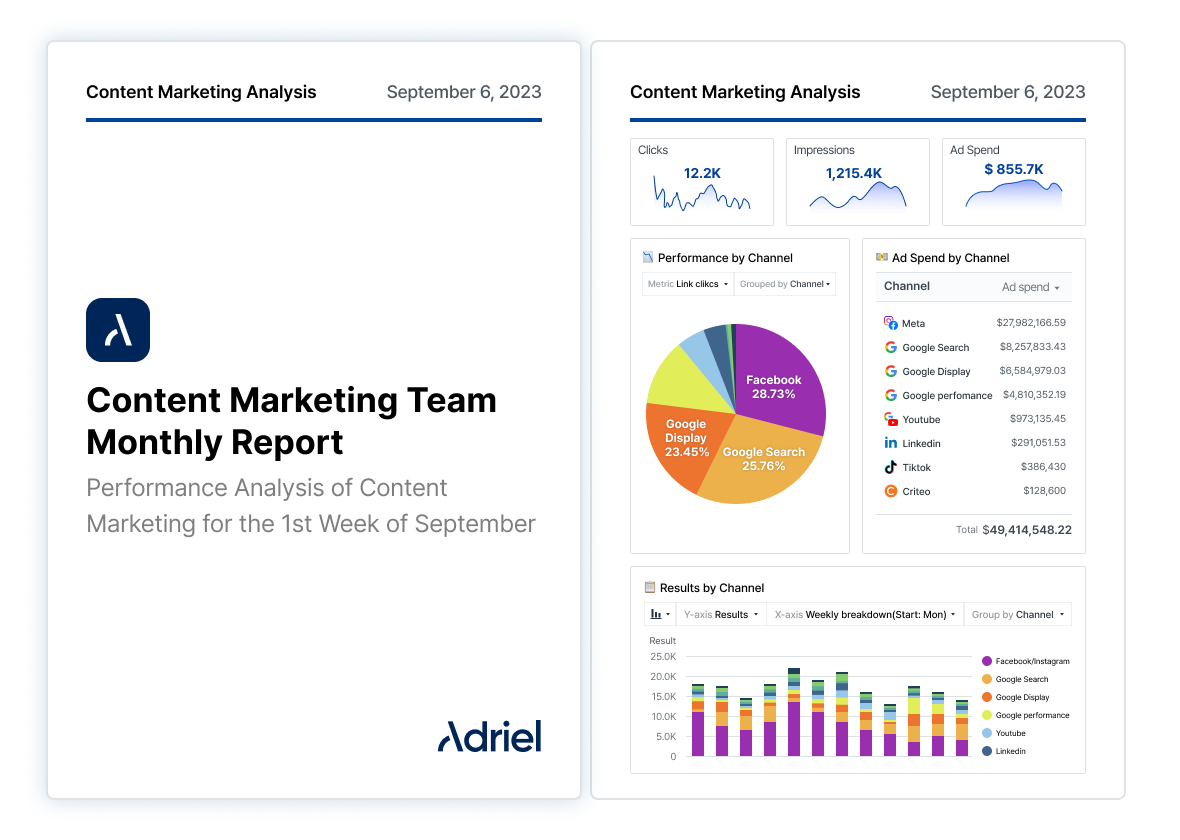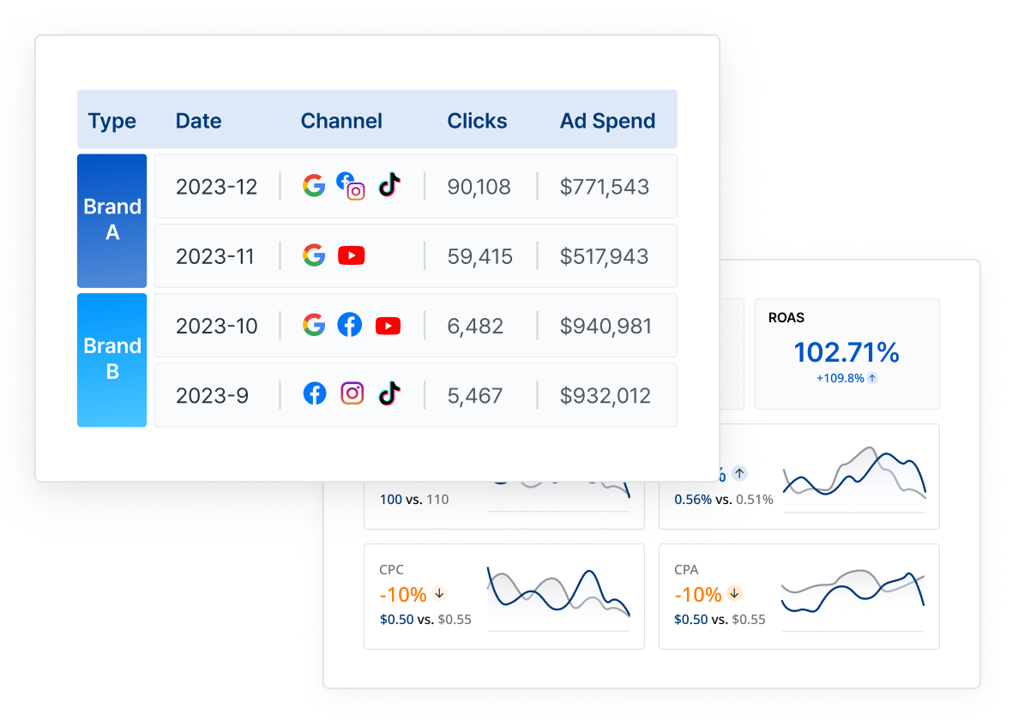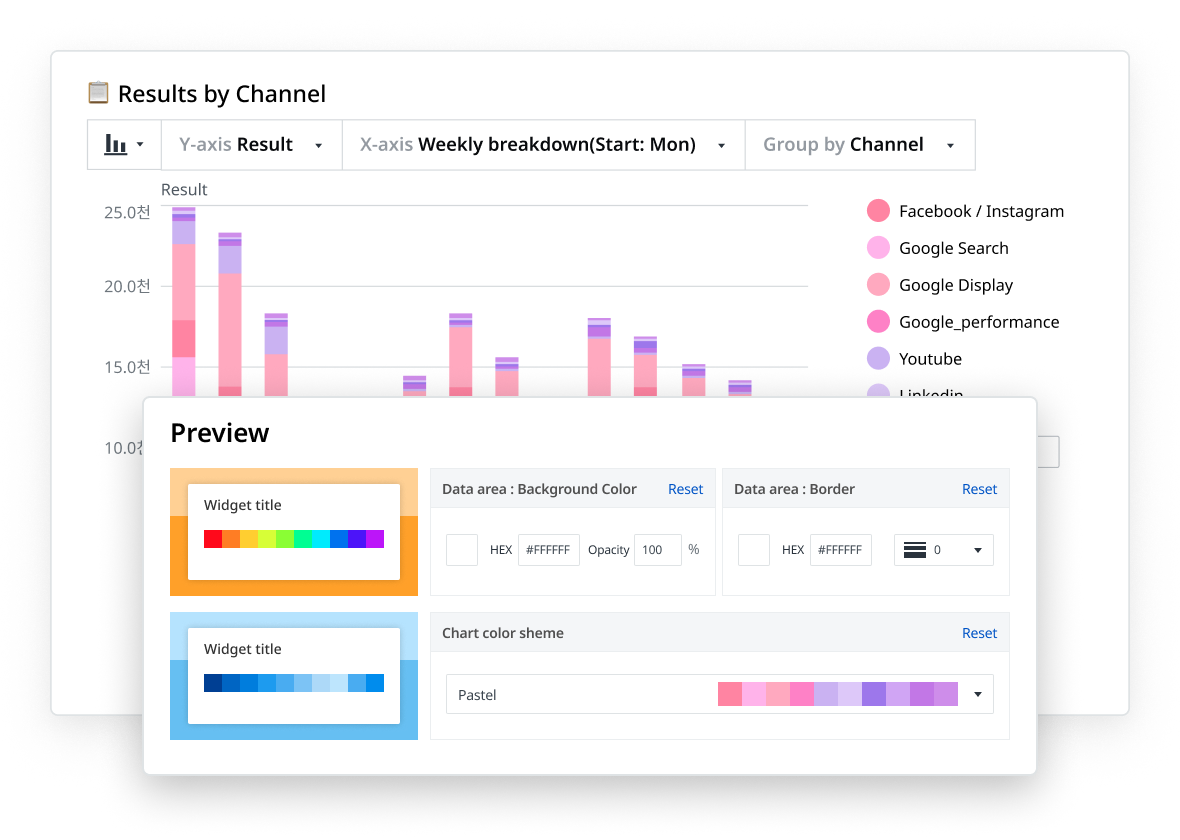Refer a partner and get paid! Earn 20% of all qualifying subscriptions referred to our team 👉

Learn More
See Google Analytics 4 and Meta Ads data side-by-side on one dashboard. Map out which Instagram and Facebook advertising campaigns lead to conversions and how.



Analyzing GA4 and Meta Ads (Instagram and Facebook Ads) data together is important for accurate attribution and conversion tracking. When you combine these two data sources, you can better understand the entire customer journey and how users behave when they land on your website.
On Adriel, you can easily map out important Meta Ad performance metrics to GA4 data like sessions and events. Attribute conversions to specific marketing channels, campaigns, keywords, or ads. Make better decisions, allocate budgets accurately, and identify opportunities for improvement.
Creating a GA4 and Meta dashboard is as easy as 1-2-3 with Adriel. You just need to choose both GA4 and Meta as data-sources from a drop-down list and start using our ready-made templates or customize your own with interactive widgets and graphs. No coding and technical knowledge required.

Sign up for Adriel with your email after your demo.
You can then select a pricing plan that suits your needs.

Simply choose from a drop-down list to import dimensions and metrics from your ad accounts, analytics tools, and mobile measurement partners.
Adriel supports integrations with up to 650+ data sources, including ad platforms, social media channels, and ecommerce tools like:
Explore integrations here.
And if you don’t see an integration that we support natively, we can create custom integrations just for you.

Use our ready-made templates to instantly see all your KPIs in minutes.
Or, start from a blank page and choose your data visualization widgets and graph types.

If you’re a marketing agency or brand marketer, you want to be able to present different sets of information to different stakeholders.
Set up different views for each role or client on Adriel with different access restrictions in just a few clicks.

Need paid media reports to share with clients or the C-suite team? Determine your client or brand visuals, colors, and logos, and download reports as PDFs or CSVs or get live links in minutes.
A GA4 Meta dashboard shows key metrics related to your performance of
digital marketing efforts on Facebook and Instagram.
The dashboard is structured in four main sections:




All user and session data on Meta. Includes:
Key insights into user engagement. Includes:
A comprehensive breakdown of user interactions on your Meta marketing campaigns. Includes:


An accurate picture of conversions by user and session. Includes:




When reporting Meta Ads, you will want to visualize Instagram Ads and Facebook Ads performance side-by-side to understand how each platform is contributing to your digital marketing goals. Here’s how it looks like on Adriel’s report template:





Integrate all your paid ad channels’ results into one marketing reporting dashboard. Curious to know how your Meta, Google, or TikTok Ads are performing? Connect all of these platforms to Adriel, and in less than 5 minutes, show all of your paid campaign results in one unified dashboard. See our integrations page for more information.


You can start from a blank page to create your GA4 + Meta dashboard, but what if you don’t have time? Our extensive pre-made marketing reporting dashboard library has everything you might need. Try Adriel, and you’ll have more time to research ways to increase conversion or optimize your landing pages.
Our software was expertly designed with powerful functions for marketers. But everything can be customized. Adriel’s flexibility allows you to change all aspects of the dashboard design and appearance. Impress your clients or executives with a professional marketing reporting dashboard report for an expert brand image.













.png)

Yes, you can use Google Analytics to track Facebook Ads and Instagram Ads Here's how:
But, you don’t have to go through all this with Adriel.
Just connect your Meta Ad accounts and your Google Analytics and choose the GA4 + Meta template. In a matter of minutes, key metrics like CPC and website visitors will be automatically visualized on the dashboard.

Here are some reasons why you should use a ready-made dashboard to monitor your Instagram and Facebook ad campaigns:

